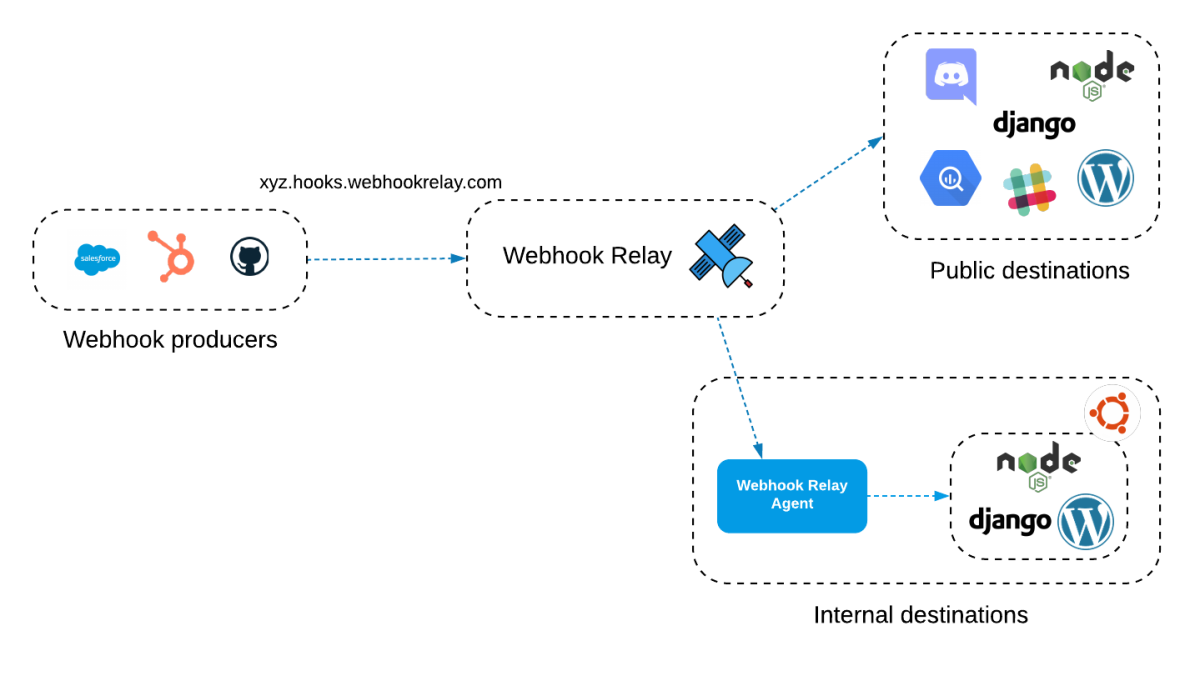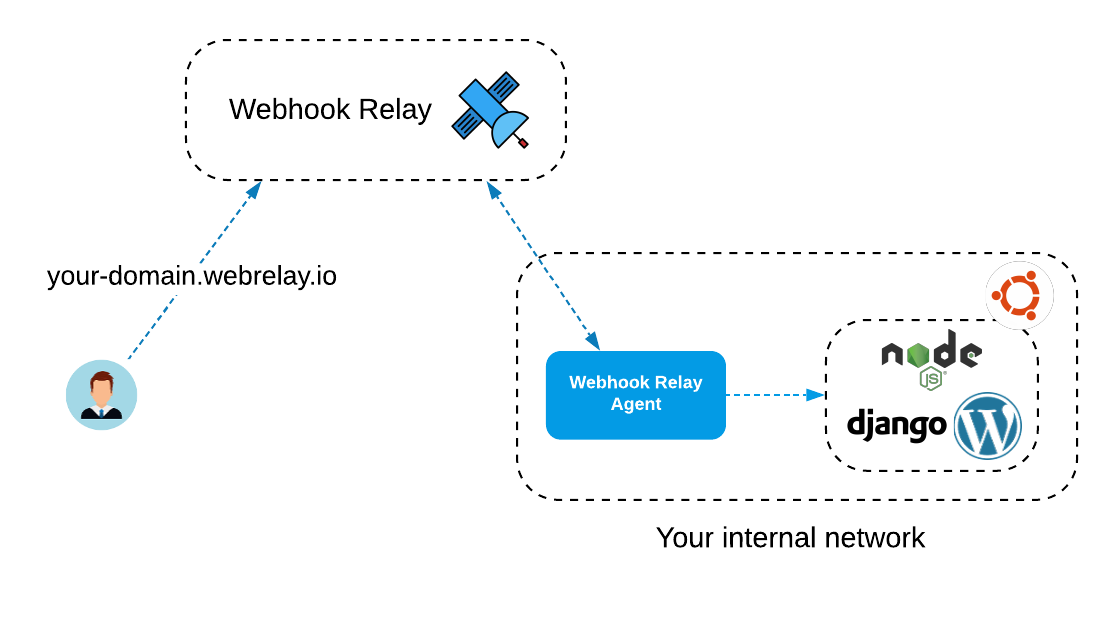Getting Started
What is Webhook Relay and how you can use it.
What is Webhook Relay?
Webhook Relay is a secure tunneling solution that provides:
- Webhook Forwarding - secure, unidirectional by default with optional request/response transformation.
- Bidirectional Tunnelling - fast tunnels for direct access to any HTTP service. This is ideal for accessing internal APIs and demoing websites.
Check out our dashboard's home page to get started quickly.
Use Cases
Popular use cases:
- Receive Stripe, Shopify, GitHub and other webhooks on your local machine while developing your application.
- Allow remote clients to connect to your backend, for example AWS EC2 instances communicating with your MacBook Pro.
- Forward a single webhook to multiple destinations, for example Slack and GCP PubSub.
- Transform webhooks, for example Docker push webhook into a Slack message.
- Demo your website to clients or customers.
- Access IoT devices and sensors remotely.
Webhook Forwarding
Webhook forwarding is by default a uni-directional ("one way") way to send webhooks to other internal and public destinations.

Key facts:
- Unidirectional by default, but you can enable it to wait for the response.
- Single received webhook can be forwarded to multiple destinations.
- You can use Functions to execute custom code when a webhook is received, for example to filter or modify requests.
Use webhook forwarding when:
- Your requirement is primarily "fire and forget".
- You need to forward webhooks to internal destinations (quick start).
- You need to forward a single webhook to multiple destinations (quick start).
- You need to transform webhook, for example Docker push webhook into a Slack message (see examples).
Inputs
Inputs represent your public endpoints. These are the unique URLs for instance, https://xyz.hooks.webhookrelay.com. Each input have several configuration options:
- Whitelabel domain name (configurable in all paid plans).
- Static response code, headers and body.
- Dynamic response coming from any destination (must respond within 10 seconds).
- Each input can have an attached Function (examples) which can modify response and request.
Outputs
Outputs define your destination, where webhooks will be sent. These destinations can either be an HTTP server running on your local machine (http://localhost:8080) or a public server such as https://example.com.
Main options for output configuration:
- Destination (where to forward).
- Path lock - whether to dynamically append URL paths (xyz.hooks.webhookrelay.com/foo/bar -> localhost:8080/foo/bar)
- Attached function to execute on a webhook.
Buckets
Buckets are a grouping mechanism in Webhook Relay for Inputs and Outputs. You can also enable certain settings such as authentication and large webhook support (requests up to 50MB).
Tunnels
Tunnels fully expose your local HTTP services to the internet. This is ideal for accessing internal APIs and demoing websites:

You can create, view and manage your tunnels here: https://my.webhookrelay.com/tunnels or check out the quick start.
Access tokens
Access tokens are used to authenticate Webhook Relay agents and any other API requests. You can provision a key and secret pair here: https://my.webhookrelay.com/tokens.

